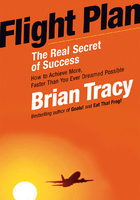Open Space Technology?
On 21 April 1992, a group of about 225 people gathered in Denver, Colorado, for a two-day meeting to develop cooperative arrangements for the effective expenditure of $1.5 billion designated for highway construction on tribal and public lands. Roughly one-third of these people were Native Americans, one-third were federal bureaucrats, and one-third were from state and local governments. On the face of it, the prospects for a peaceful, let alone productive, meeting seemed less than bright. The participants were all natural, if not historical, enemies. As a matter of fact, the results were rather surprising.
When the people arrived, it was clear that this was not business as usual. To begin with, there was no advance agenda. People knew only when the meeting would start, when it would end, and that somehow (as yet undefined) they would accomplish the task before them. Needless to say, there were more than a few skeptics, whose disbelief was not lessened by the physical appearance of the room in which they were to meet. What they found were two large concentric circles of chairs, with nothing in the middle and a blank space of wall behind.
Within one and one-half hours everything had changed; even the skeptics were hard at work dealing with the issues of personal concern to them. To reach that point, each person who cared to was invited to identify any issue related to the central task for which they had some real passion, write it down on a quarter sheet of newsprint, and post it on the wall. In doing so, they accepted responsibility for convening a session on their issue and making a written report of the results. When all the issues were posted, everybody went to the wall en masse and signed up for the sessions in which they cared to participate. And then it was off to work. That was it, and this was Open Space Technology (OST).
In the course of the two-day meeting, that diverse group created, and totally self-managed, an agenda built around some fifty-two different task groups. The agenda itself was created in less than half an hour, and the various task groups produced about 150 pages of proceedings in thirty-six hours. Thanks to the wonders of modern computers coupled with overnight printing, copies of the final proceedings rolled hot off the press in time for the departure of all participants on the morning of the third day. During the concluding session, one of the Native Americans said that never before had he felt so listened to and so much a part of the discussions. The feeling was shared by all parties.
It is also noteworthy that the decision to hold the meeting was made in March of the same year. Thus, the whole idea went from conception to delivery in about six weeks. There was one facilitator for the total event.
Stated in bald terms, these claims for such a large meeting may sound extreme, if not outrageous. The conventional wisdom says, and everybody knows, that creating a meeting of such size, complexity, and potential for conflict takes months of preparation and an army of planners and facilitators. Furthermore, the notion that the proceedings could not only be completed but also delivered to the participants prior to departure is going a little too far. Unfortunately for the conventional wisdom, the event did take place exactly as described, and more than that, it was not the first such event. Over the past twenty years, thousands of gatherings have taken place with similar results. While the experience may not yet be commonplace, it is definitely not a fluke. It is repeatable. It is called Open Space Technology.
How Open Space Technology came to be was not a matter of careful planning and thoughtful design. It began out of frustration, almost as a joke.
The Genesis of Open Space Technology
In 1983, I had occasion to organize an international conference for 250 participants. It took me a full year of labor. By the time I had finished with all the details, frustrations, and egos (mine and others') that go with such an event, I resolved never to do such a thing again. This resolution was confirmed at the conclusion of the conference, when it was agreed by one and all (including myself) that although the total event had been outstanding, the truly useful part had been the coffee breaks. So much for one year's effort to arrange papers, participants, and presenters. The only thing that everybody liked was the one thing I had nothing to do with: the coffee breaks. There had to be a message here.
My question was a simple one: Was it possible to combine the level of synergy and excitement present in a good coffee break with the substantive activity and results characteristic of a good meeting? And most of all, could the whole thing be done in less than a year?
The line of inquiry I chose to follow took some interesting turns, but essentially it started with the notion that if I could identify certain basic mechanisms of meetings, or human gatherings, it might be possible to build them into an approach that would be so simple it could not fail and so elemental it might possess the natural power of a good coffee break.
With these thoughts in mind, I recalled an occasion in the late 1960s when I was working as a photojournalist in a small West African village by the name of Balamah, located in the interior of Liberia. One of the high points of my visit was participation in the rites of passage for the boys. As you might imagine, this was a major celebration. It occurred every seven years and was the moment when the village inducted its male youth as full-fledged citizens. No longer children, they were expected to assume adult roles and responsibilities. The actual celebration continued for four days with all sorts of rituals and other activities. So far as I could tell, there was nothing that looked or acted like a planning committee, either during the event or prior to its occurrence. Nevertheless, five hundred people managed themselves for four days in a highly organized, satisfactory, and I have to say, enjoyable fashion. How could that be?
I do not claim to have the whole answer to the mystery of Balamah, but at least part of their secret lay in the fact that the village (like all West African villages) was laid out in a circle, with an open space in the middle. The chief's house and the houses of some of the important elders bordered what, in an American or European town, would have been the village square. But here it was a circle, and I think that difference is important.
My experience tells me that the circle is the fundamental geometry of open human communication. A circle has no head or foot, no high or low, no sides to take; in a circle, people can simply be with each other–face to face. After all, we do not have a square of friends, and on a cold winter's night it is nice to be part of the family circle.
Place people in rows (classroom or theater-style), where they all face the source of power and authority, and it is clear who will talk and who must listen. In squares and rectangles, there is separation that may be useful to keep combative parties apart, as in negotiation, but genuine, open, free communication tends to occur only at a minimum. Circles create communication.
The celebration in Balamah occurred as an ordered progression from the periphery of the town to the center of the circle, and back again. Dancers, drummers, horn players, religious and political leaders, all gathered in the outlying sections of the town and then swirled to the center in a kaleidoscope of color, rhythm, and song. The circle came alive with ceremony, speeches, and above all, dance. Intensity rose to a peak, and then peaked again, until at last it ebbed as villagers flowed outward to their homes. It was as if the village were breathing, and just as no planning committee is required for respiration, none was needed in Balamah either. It seemed to me that in the geometry of the circle and the rhythm of breath I had found two of my basic mechanisms of meeting.
The circle is the
fundamental geometry
of open human
communication.
If the circle and breath provide the fundamental shape and dynamics, then we need only some way of establishing content and determining periodicity (timetable) in order to create our conference in the coffee-break mode. Effective meetings, after all, deal with the issues at hand in a certain order. The alternative is noise and confusion.
Two additional mechanisms suggested themselves from the life of Balamah: the community bulletin board and the village marketplace. The bulletin board provides a convenient, low-tech means for identifying what people are interested in. The marketplace provides a means of bringing interests together in an orderly way. Both mechanisms are so ancient and ingrained in the human experience that explaining the rules is unnecessary. And of course if the village marketplace has not been a part of your experience, a shopping mall will do.
That is all there is. Come to a circle, take a deep breath, create a bulletin board, open a marketplace, and go to work. It really is that simple.
Who ever
heard of a
square of
friends?
Experience to Date
Over the past twenty years space has been opened a minimum of sixty thousand times in 124 countries, involving millions of people. The size of groups has ranged from five to more than two thousand, and the variety of applications is seemingly without end. Product design, strategic planning, community organization, organizational renewal, environmental planning, professional development, and on occasion–just plain fun.
For example, the National Education Association gathered 420 teachers, school board members, and administrators from all over the United States for one day around the theme “Education for America.” In that time, they created and self-managed some eighty-five workshops. When they were through, they evaluated their effort on a scale of 1 to 10, with 10 being highly successful and 1 the opposite. The average score was 9.3. The total preconference planning time for agenda creation was zero.
At the other end of the size spectrum, groups of five have found the approach quite effective, and intact management teams of twelve to twenty have discovered that OST is an excellent way to build their teams and transact a great deal of business in a remarkably short time. The senior management team of the United States Forest Service (known as “Chief and Staff”), which consists of the seventeen people who manage that organization of thirty-five thousand people, have used OST to break out of the mold and consider issues they never could quite get onto the agenda. As in many senior management groups, the agenda for the weekly Chief and Staff meetings was guarded as closely as Fort Knox, all in the name of efficiency. The gain in efficiency, however, was often balanced by a loss in effectiveness, as only those items officially on the agenda could be discussed. The rest remained unspoken, and possibly unspeakable.
The Forest Service is by no means alone in this dilemma, but when the unspeakable remains unspoken, important business may be neglected. Worse yet, everybody knows but nobody can do anything, for the issues never come up officially. Open Space can change all that. Everybody has the right and responsibility to place items on the agenda, which allows the unspeakable to be spoken.
In South Africa, the twelve members of a totally new management group, which had been created when several corporations merged, used OST with great success to fashion a new organizational structure, reporting relationships, and product management procedures, all in two days. More important than the completion of a number of essential organizational tasks was the fact that they had become a team.
A strong point of Open Space Technology is its ability to unite groups of enormous diversity in their education, ethnicity, economics, politics, culture, social position, or all of the above. In one meeting sponsored by the Together Foundation to promote global unity, 178 people from twenty-eight countries speaking seventeen languages addressed their task for five days. Participants ranged from presidents of countries to ordinary planetary citizens, and in just about one hour this group created eighty-two workshops that they self-managed for the duration of the conference. There was no simultaneous translation, one facilitator, and preconference planning was limited exclusively to logistical details.
Open Space Technology thrives in areas where there is conflict and confusion. In the early summer of 1992, OST was used in one of the South African townships to promote useful discussion among the several political groups. The focus of conversation was improving communications in the area. For a full day, representatives of the various political parties and representatives of nearby industry (largely white) worked together. It would be a supreme overstatement to say that all issues were resolved, or that love and light broke out in full abundance. But the discussions were intense, productive, without rancor, and contrasted sharply with conditions in a neighboring township where conversations had ceased and bloodshed commenced.
Open Space around the world. A funny thing. It seems to work everywhere.
There was also a continuing benefit. Several days after this particular gathering, one of the participants called to say that for two years he, as president of a local school organization, had been attempting to get the people involved in creating their own future. Nothing had worked. They sat like bumps on a log. Then he tried Open Space Technology, and his problem was reversed. The people became involved, and he had but one option: get out of the way.
In Venezuela, TELCEL, the new cellular phone company, was growing at a phenomenal rate in the midst of sometimes incredible confusion. Its American partner, Bell South, had predicted that by the end of TELCEL's first year of operation, TELCEL might sell fifteen thousand units. The fact of the matter was that TELCEL sold fifty thousand units in less than a year to become the fastest growing cellular phone company in the world. That was the good news. But there was some bad news as well. The growth was so rapid that people scarcely had time to breathe, talk, or solve organizational problems. The whole venture was about to be overwhelmed by waves of confusion and fatigue. A major midcourse correction was required, without any reduction of speed, for slowing down or stopping would mean the loss of their major objective, market dominance.
On a Saturday, every employee of the corporation was invited to an Open Space event focused on the future of their company. No additional compensation was offered. People were going to do this on their own time or not at all. Of the 263 people then employed by TELCEL, 252 showed up. In less than an hour some thirty-two issues were identified, which then formed the basis of a similar number of task groups. For one full day, the discussion raged. Technical people talked to salespeople, who talked to marketing people, who talked to financial people, who talked to computernics, who talked to senior management. And around it went one more time. Interestingly enough, only one of the thirty-two working groups was led by a member of senior management. All the leadership came from the trenches.
When evening rolled around and the final report-out had been completed, a most remarkable thing occurred. Somebody put a catchy dance tape on the sound system, and for the next three hours, the party rolled on, stopping only when the buses had to leave. And this was a corporation at the edge of destruction!
Six months later, virtually everybody in the corporation looked at the day in Open Space as the turning point. Obviously not all the issues were solved on that day, but the critical element necessary for their resolution was set in place: communication. People found they could talk and work together.
Open Space Technology has now successfully been utilized in India, Asia, South America, Africa, Europe, China, the United States, and Canada with groups of from five to two thousand members. The purposes have ranged from corporate redesign in the face of intense competition to national redesign in the face of massive transformational forces, as in South Africa and the Middle East. The technology is not magic, nor does it solve all problems. However, in those situations where highly complex and conflicting issues must be dealt with, and solved, by diverse groups of people, OST can make a major contribution.
In what follows, I have attempted to lay out an approach to the creation of Open Space. I strongly urge that you read the whole book through, skipping details where they become overwhelming. And then just do it, even if your first group is only the neighborhood children with associated dogs and cats. With a little experience under your belt, you can come back for the fine points.
Coming Attractions
To give you some idea of what lies ahead, herewith find a brief outline of coming attractions. We begin with “Preparation,” chapter 2, which deals with all the practical considerations necessary for creating Open Space, including supplies, logistics, and the most important question, should you do it at all? Open Space is not appropriate in every situation.
Next on the agenda is “Proceedings and the Electronic Connection,” chapter 3. From the very beginning, Open Space and cyberspace have had close relations, enabling the creation of instant proceedings, simultaneous multisite gatherings, and more. If you are something of a cyberphobe, I would skip this one or save it for later. Open Space can work quite well without a computer in sight.
Chapter 4 deals with a critical and possibly sensitive issue, the personal preparation of the facilitator. As you will discover, Open Space operates at levels and in ways that standard facilitation training, or experience, may have overlooked. The central issue is not so much about learning a set procedure, but rather achieving a quality of being.
Chapter 5 describes the sorts of things that need to be done immediately prior to an Open Space event, and also continues the discussion of the facilitator's own preparation. Then it is off to the races, or into the Space as it were.
“Creating Time and Space,” chapter 6, takes you through the first one and one-half hours of a gathering: what to do and what to say. I have provided essentially verbatim transcripts of what I say in these circumstances, but this is not about learning your lines. Take what I have to offer and make it your own with whatever modifications suit your own personal style.
“Holding Time and Space,” chapter 7, is all about what you do during the course of an event, after it has started. You will find, however, that it is not so much about doing as being.
Chapter 8 “Movement to Action” describes how the group passes from general discussion to focused action. Call it action planning if you will, but the net effect is that great ideas are readied for implementation.
In the next few chapters we come to the end. Chapter 9, “Endings and New Beginnings,” describes how to bring an event to closure in a way that the good things planned and experienced will have a life after Open Space–on Monday morning.
In chapter 10, we take a look at what may happen after Open Space. How do you keep the spirit and momentum alive?
Chapter 11 is all about the unexpected gifts that Open Space delivers. What began as powerful way to create better meetings also turns out to offer new insights into the critical elements of organizational life: leadership and high performance. And the final gift may be the most surprising and important: peace. Without any special effort or intention hugely conflicted individuals and ideas achieve a remarkable degree of harmony and flow. This is not the sort of peace in which tranquility is achieved by dampening all the fires and compromising to the lowest possible denominator. It is a robust peace in which differences remain, but now in a supportive, complementary fashion.
In the final chapter (12) thoughts are offered about the future of Open Space. The expressed hope is that Open Space Technology will be seen for what it is–a halfway technology which may be discarded when we get to the “real thing.” What the “real thing” might be awaits your discovery at the end of the book. Of course, you could skip to chapter 12 right now, but if you did that I think that what you read would make little sense, would stretch your understanding of the credible, and might well abort your reading of this book before you even get started. The choice, of course, is yours.














